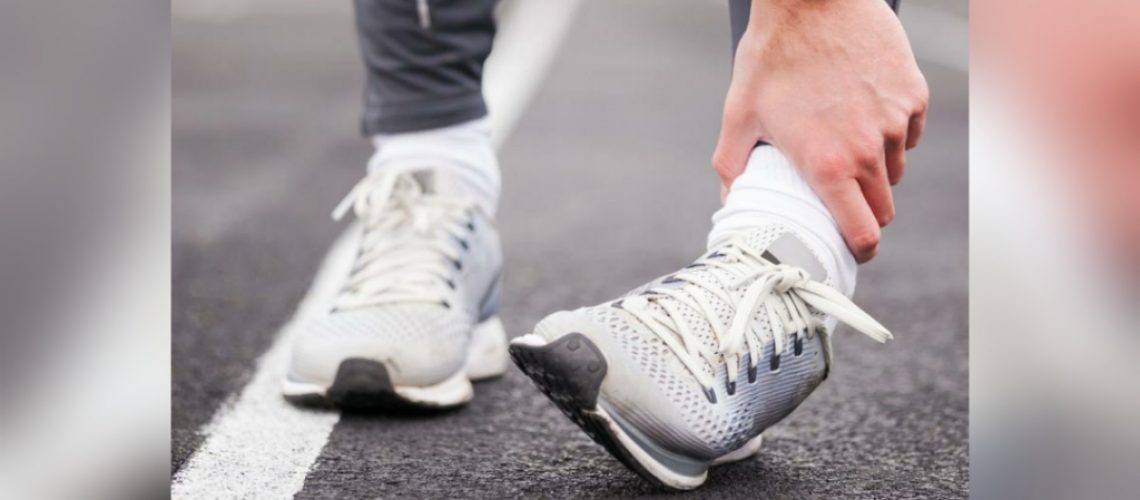We’ve all rolled an ankle or pulled a hamstring while playing sports. The next few days the injured joint/muscle/tendon goes through a predictable pattern of pain, swelling, warmth, redness and restricted movement. Previous research suggested “RICE” to manage the initial phase of injury; rest, ice, compression, and elevation. Most patients who visit us have used this combination of factors when dealing with an acute injury, however; new research in the area of acute injury management propose an updated acronym “PEACE & LOVE”1: protect, elevate, avoid anti-inflammatories, compress, educate & load, optimism, vascularization, and exercise.
Moving away from RICE
The rationale behind rest is to avoid stress on the injured tissue so it does not cause pain or continue to swell uncontrollably and as a result, slow the healing process. Although the idea of rest is important in order not to further harm the injured area, the more appropriate term is restricted activity or active rest. The healing tissue requires a certain amount of movement and load to aid in the regeneration of new collagen tissue. In the case of an ankle injury, research suggests earlier mobilization allows for a quicker return to sports compared to a period of immobilization.2
Ice has long been proposed as the best remedy for inflammation associated with an injury. Ice slows down the metabolic process in cells, prevents an exaggerated inflammatory response, and it decreases pain. But new research suggests that although ice may help with pain and decreasing inflammation, it may slow down the healing process.3 A certain amount of inflammation is required for optimal tissue healing because inflammation and warmth suggest that new blood vessels and scar tissue are forming to start the foundation of tissue healing. By applying ice and slowing down all cellular repair processes, the rehabilitation of the injured tissue is disrupted.4
PEACE & LOVE:
Protect:
Protection involves restricting movement in the initial few days after injury. This does not mean you should completely avoid moving the injured tissue or not weight bear on an injured leg, it means to restrict movements so that you do not aggravate the injury. The best way to predict how much movement you can do to prevent aggravating the injury but still promote healing is using pain as a guide. If a movement or weight bearing is painful, don’t do it until the injured tissue is able to handle it without pain.
Elevate:
In order to prevent swelling from pooling in extremities, it is important to elevate the injured extremity above the level of the heart. In the case of a sprained ankle or lower extremity injury, we recommend placing a pillow underneath your mattress when you sleep so that the extremity is raised above the level of the heart.
Avoid anti-inflammatories:
As mentioned earlier, the inflammatory process is required for optimal tissue healing as it signifies the regeneration of new blood vessels and scar tissue. Although anti-inflammatories can assist in decreasing pain, they are not recommended after an acute injury as they can impair the tissue healing process.5
Compression:
Compression of the injured tissue using taping and or bandaging can help reduce excessive inflammation, but unlike ice, compression does not slow down the cellular processes of healing.
Education:
As therapists it is our role to provide our patients with the most appropriate research regarding tissue healing and what to avoid. Research suggests that compared to passive treatments, active therapy is most effective in the rehabilitation of acute injuries.
&
Load:
Active therapy is loading the injured tissue in a gradual way. Tissues respond to loading by initiating the repair process and speeding up the regeneration of blood vessels and scar tissue.6 It is important to use pain as your guide for loading and avoiding excessive loading that can impair the healing process.
Optimism:
Our emotions have a role in recovery of injuries. Pessimism, catastrophization, depression and fear are associated with poorer outcomes in rehabilitation.7 It is important to keep an optimistic but realistic approach to rehabilitation.
Vascularization:
Cardiovascular physical activity, within pain limitations, promotes increased blood flow to the injured tissue and can maintain overall function. We often recommend biking on a stationary bike quite early in the rehabilitation process and especially If there are weight bearing limitations after an acute leg injury.
Exercise:
As stated multiple times throughout the blog post, exercising early and without pain is the recommended strategy for optimal tissue healing. Exercise promotes mobility, strength, and proprioception. Early mobilization has shown to promote earlier return to play than prolonged immobilization.

Come visit us at The Lab for the most optimal rehabilitation after your acute injury!
1 Dubois, B. and Esculier, J. (2019). Soft tissue injuries simply need PEACE & LOVE | BJSM blog – social media’s leading SEM voice. [online] BJSM blog – social media’s leading SEM voice. Available at: https://blogs.bmj.com/bjsm/2019/04/26/soft-tissue-injuries-simply-need-peace-love/
2 Bleakley CM, O’Connor SR, Tully MA, et al. Effect of accelerated rehabilitation on function after ankle sprain: Randomised controlled trial. BMJ2010;340: c1964.
3 Singh DP, Barani Lonbani Z, Woodruff MA, et al. Effects of topical icing on inflammation, angiogenesis, revascularization, and myofiber regeneration in skeletal muscle following contusion injury. Front Physiol2017;8: 93.
4 van den Bekerom MPJ, Struijs PAA, Blankevoort L, et al. What is the evidence for rest, ice, compression, and elevation therapy in the treatment of ankle sprains in adults. J Athl Train2012;47: 435-43.
5 Duchesne E, Dufresne SS, Dumont NA. Impact of inflammation and anti-inflammatory modalities on skeletal muscle healing: From fundamental research to the clinic. Phys Ther Sport2017;97: 807-17.
6 Khan KM, Scott A. Mechanotherapy: How physical therapists’ prescription of exercise promotes tissue repair. Br J Sports Med2009;43: 247-52.
7 Bialosky JE, Bishop MD, Cleland JA. Individual expectation: An overlooked, but pertinent, factor in the treatment of individuals experiencing musculoskeletal pain. Phys Ther2010;90: 1345-55.

